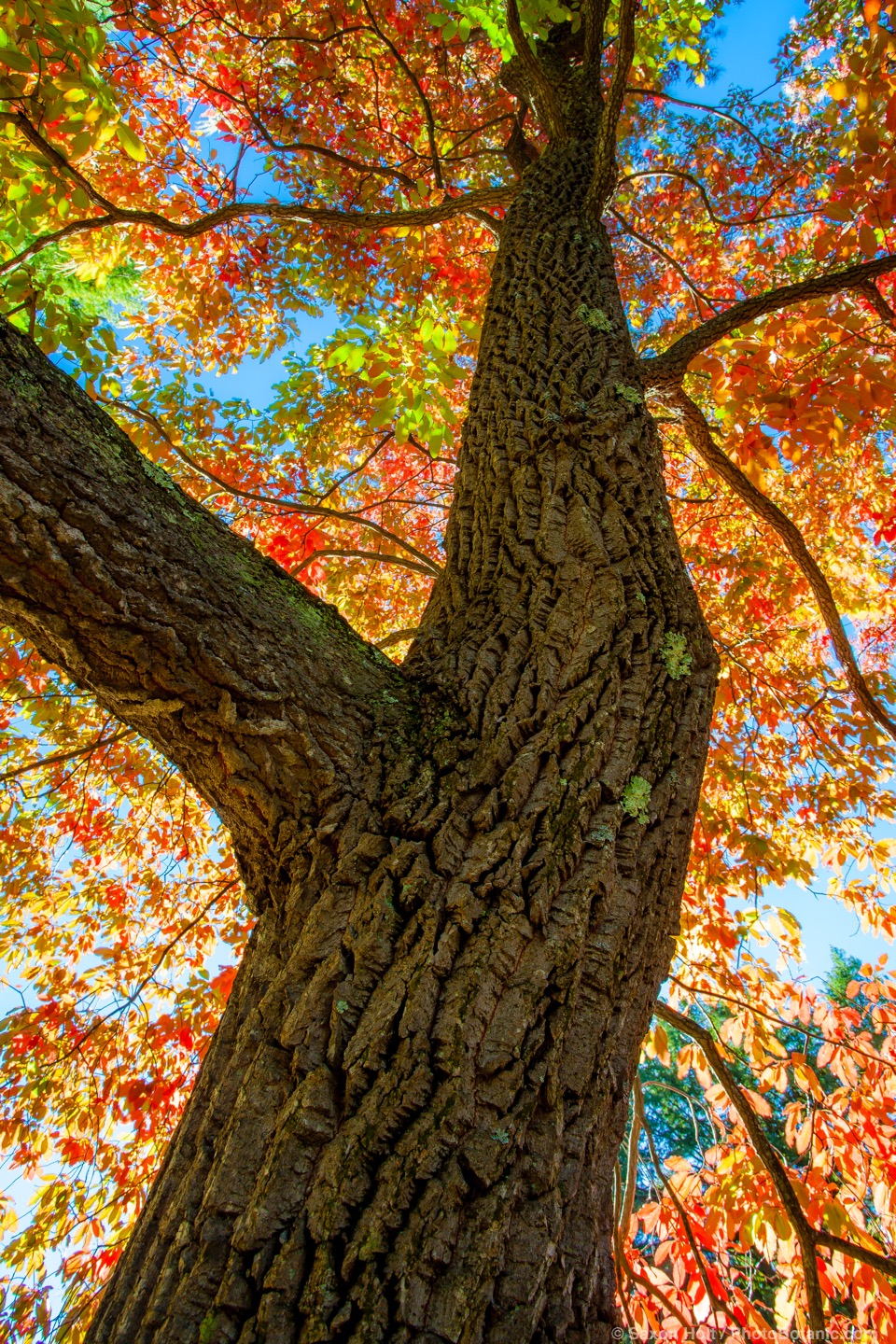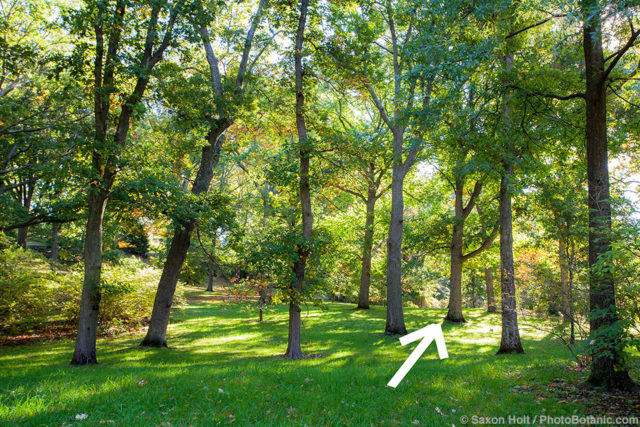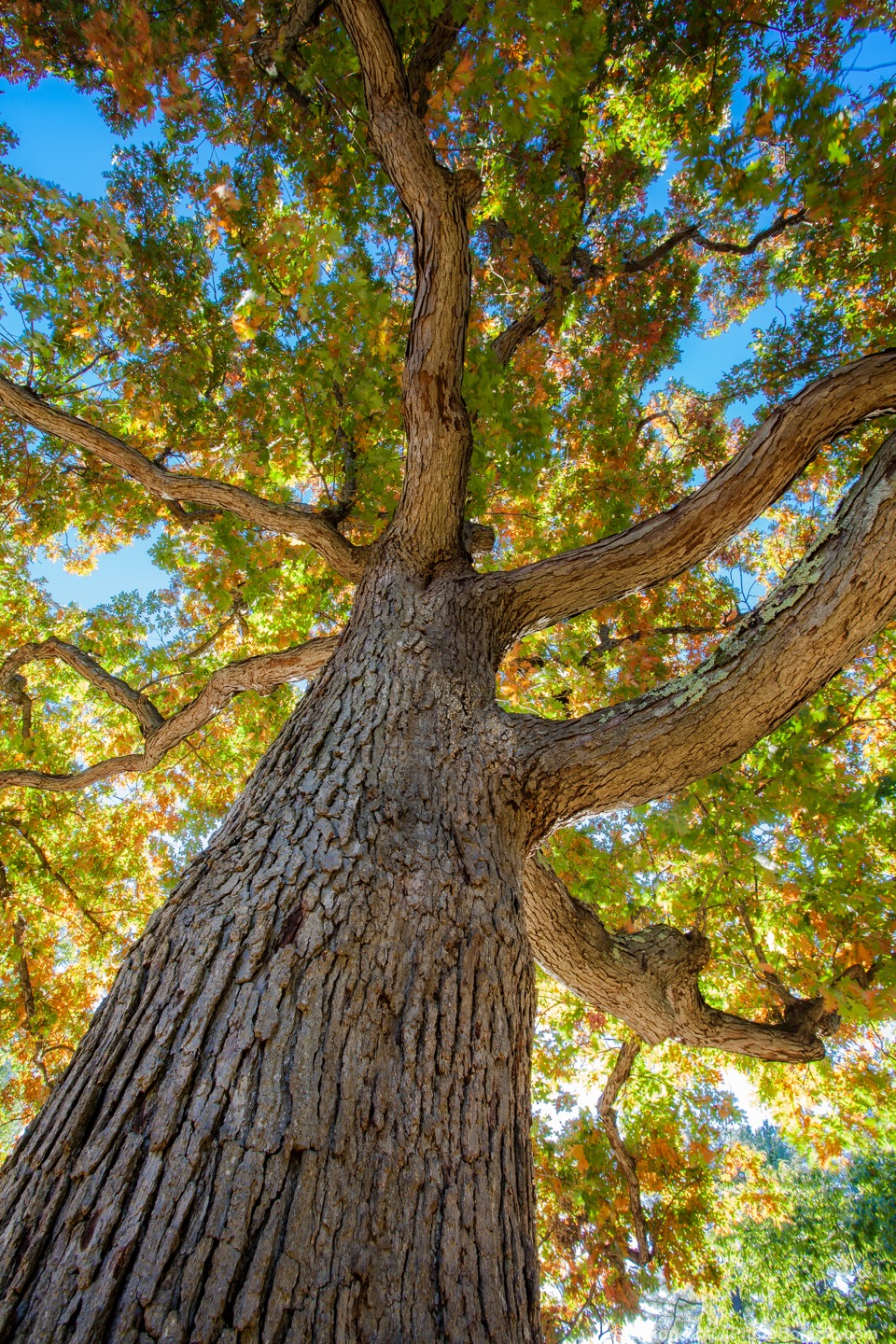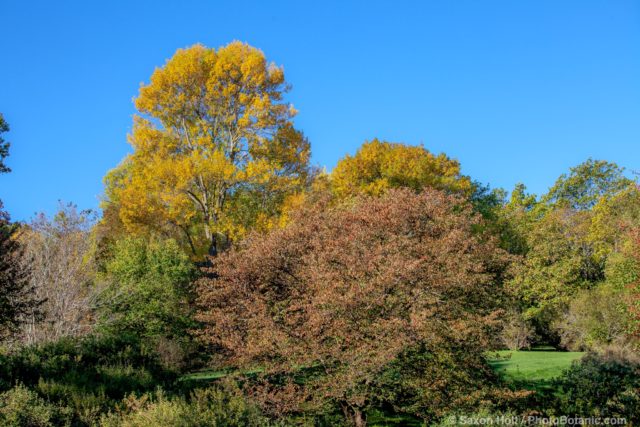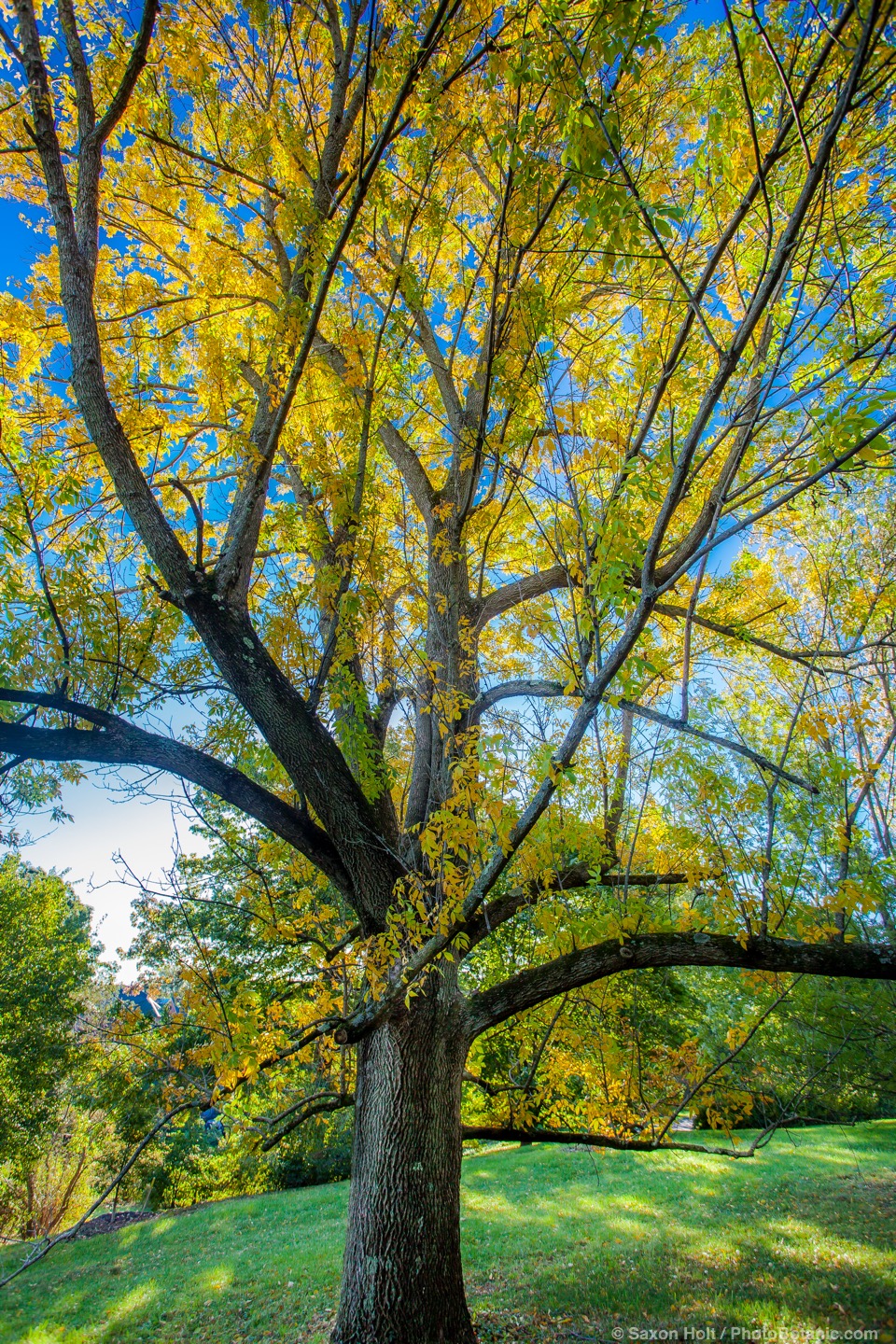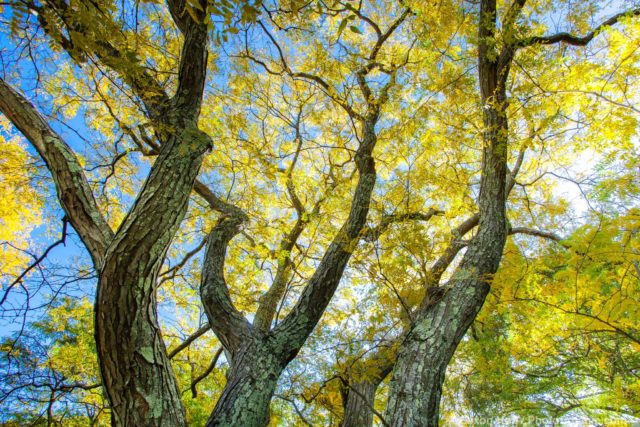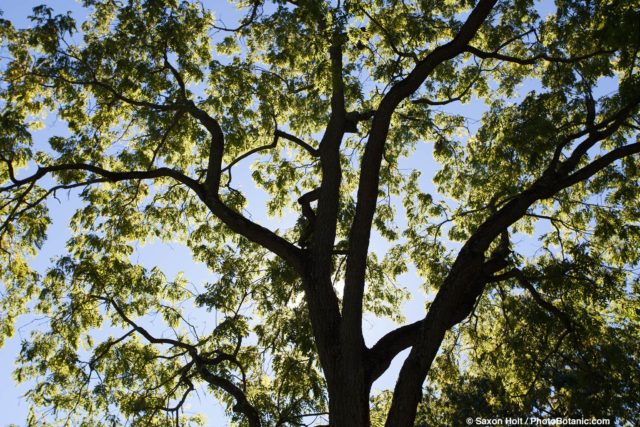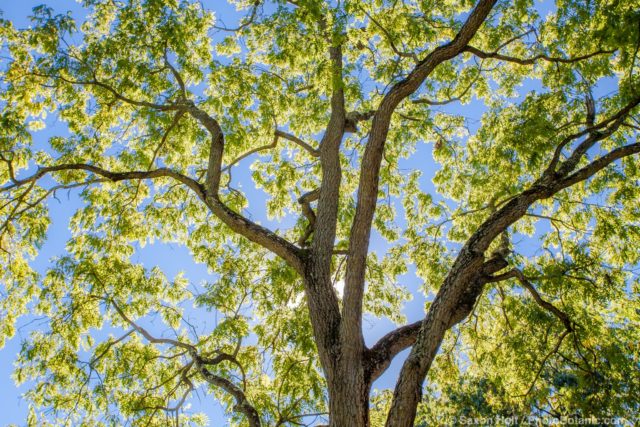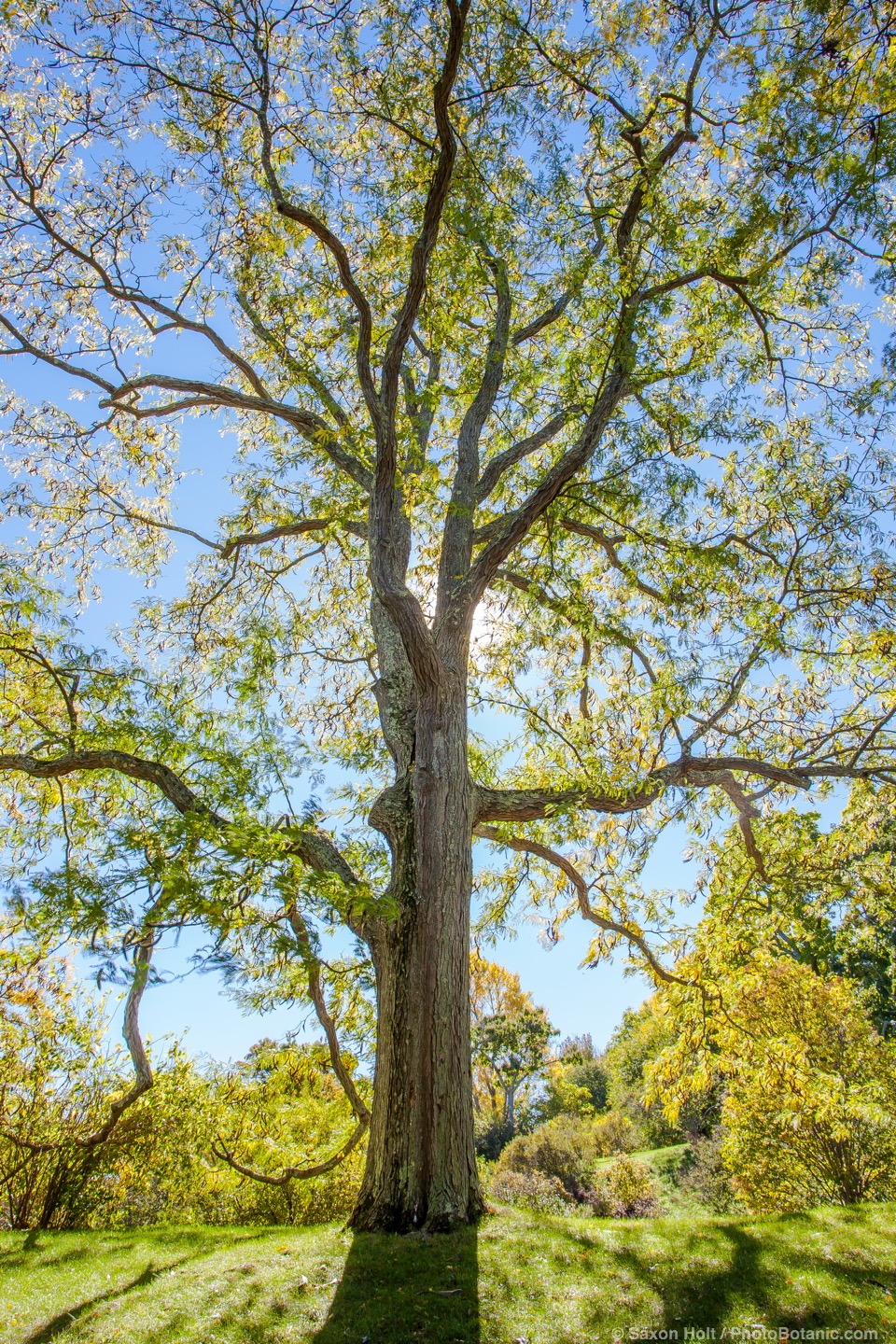A recent visit to the Arnold Arboretum in Boston provided a glorious opportunity to photograph trees. After all, the word “arbor” is Latin for tree and arboreta are collections of trees. What better a place to go to work with my camera.
I confess I was once uninterested in traditional arboretums because there tends to be little structure to define a garden. But now I have learned to appreciate the simple unique beauty of trees, and there is no better place to study them than a good arboretum such as the Arnold.
A tree that has had the chance to grow up in the care of an Arboretum is a chosen specimen, on display to represent an entire family of brothers and sisters that may live nowhere near the collection. An arboretum will have planted them with room to grow and reach their full stature.
Just as snowflakes and fingerprints are all different, every tree is different from every other tree. Each specie has its own signature DNA of leaf shape, bark structure, and branching within its native habitat with phenotypic distinction. Each grows a bit differently in every microclimate, so that by the time any given tree is mature it is utterly unique.
Looking up at a tree to see the branching, scarring, and subtle growth patterns one can imagine its history, what it has seen, what birds might have visited, how many squirrels have jumped from limb to limb, and what plants it has already outlived.
Trees tend to be hard to photograph simply because they are large and nearly impossible to separate from the landscape. My favorite trees, the Oaks of California, can often be found alone in the landscape, as seen in a post on my PhotoBotanic site, but most trees are mingled into woodlands or crowded into gardens and are really hard to see in their full magnificence.
Here is a grove of Oak trees in the Arnold Arboretum.
Note that I want to photograph one specific tree. I look for any opportunity to isolate trees to show their shape, but stepping back far enough to see the whole tree and its branch structure brings in all the others.
Instead, I find I can walk right up under a tree and look straight up from the vantage point of a few inches away from the trunk.
A tripod is always critical in making these compositions, though I confess, I usually get a crick in the neck straining to look into the viewfinder.
From across the garden, I saw this Green Ash tree with butter yellow fall foliage.
I walked up underneath it, both to isolate the tree and to help make the autumn foliage glow.
Usually, I prefer a vertical format so that the trunk of the tree leads up into the composition – and the tree towers as a tree should.
Trees are tall after all, so a vertical usually makes sense, but sometimes when a tree has an especially nice branch pattern only a horizontal can really show the display. Here is a vertical and horizontal of the same honey locust tree:
Looking up at the trees also allows the leaves to glow because of the back light. This effect will happen even if there is not strong, sunny light in the canopy, because to open up the shadows, the photographer is effectively overexposing – which will make the leaves bright anyway.
In order to get a proper exposure to show off the bark and still have color in the sky I usually will underexpose the original digital file so that I can hold the highlights and color in the sky. Then in the postproduction, with the computer, I will open up the shadows.
This is something I could never do in years of shooting with film. The digital era has opened up a new way of expressing trees in photographs.
I only had time for one day of shooting at the Arnold while in Boston, but it was a glorious day. These are trees I never see in California, I felt honored to be in their presence.
Here is the full gallery of the photos in the PhotoBotanic Archive.


